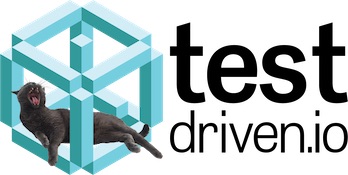Configuration Management
Configuration management involves modifying servers from an existing state to a desired state and automating how an application is deployed.
Configuration management tools
Numerous tools exist to modify server state in a controlled way, including Puppet, Chef, SaltStack, and Ansible. Puppet and Chef are written in Ruby, while SaltStack and Ansible are written in Python.
Ad hoc tasks
Configuration management tools such as Chef, Puppet, Ansible, and SaltStack are not useful for performing ad hoc tasks that require interactive responses. Fabric and Invoke are used for interactive operations, such as querying the database from the Django manage.py shell.
Configuration management tool comparisons
-
Moving away from Puppet: SaltStack or Ansible? is an openly biased but detailed post on why to choose SaltStack over Ansible in certain situations.
-
Ansible vs. Shell Scripts provides some perspective on why using a configuration management tool is a better choice than venerable but brittle shell scripts.
-
Ansible vs. Chef is a comparsion of Ansible with the Chef configuration management tool.
-
This post on Ansible and Salt: A Detailed Comparison shows the differences between these two Python-powered tools.
Ansible configuration management
Ansible is an open source configuration management and application deployment tool built in Python.
Ansible Resources
-
An Ansible Tutorial is a fantastically detailed introduction on using Ansible to set up servers.
-
Ansible Text Message Notifications with Twilio SMS is my blog post with a detailed example for using the Twilio module in core Ansible 1.6+.
-
Python for Configuration Management with Ansible slides from PyCon UK 2013
-
An introduction to Ansible is a tutorial on the basics of getting started with the tool.
-
Multi-factor SSH authentication with Ansible and Duo Security
-
Shippable + Ansible + Docker + Loggly for awesome deployments is a well written detailed post about using Docker and Ansible together with a few other pieces.
-
Idempotence, convergence, and other silly fancy words we often use
Application dependencies learning checklist
-
Learn about configuration management in the context of deployment automation and infrastructure-as-code.
-
Pick a configuration management tool and stick with it. My recommendation is Ansible because it is by far the easiest tool to learn and use.
-
Read your configuration management tool's documentation and, when necessary, the source code.
-
Automate the configuration management and deployment for your project. Note that this is by far the most time consuming step in this checklist but will pay dividends every time you deploy your project.
-
Hook the automated deployment tool into your existing deployment process.
自动化应用配置后的下一步是什么?
Sponsored By

Fix errors in your Python code before your users see them by monitoring with Rollbar.
Learn More Python

Deploy web apps with the Ansible configuration management tool.

Build microservices with Docker, Flask & React in this great course.
Full Stack Python
Updates via newsletter, Twitter & Facebook.
